Affiliate links on Android Authority may earn us a commission. Learn more.
Fitbit vs Apple Watch: Which fitness ecosystem is best?
Published onMarch 3, 2023
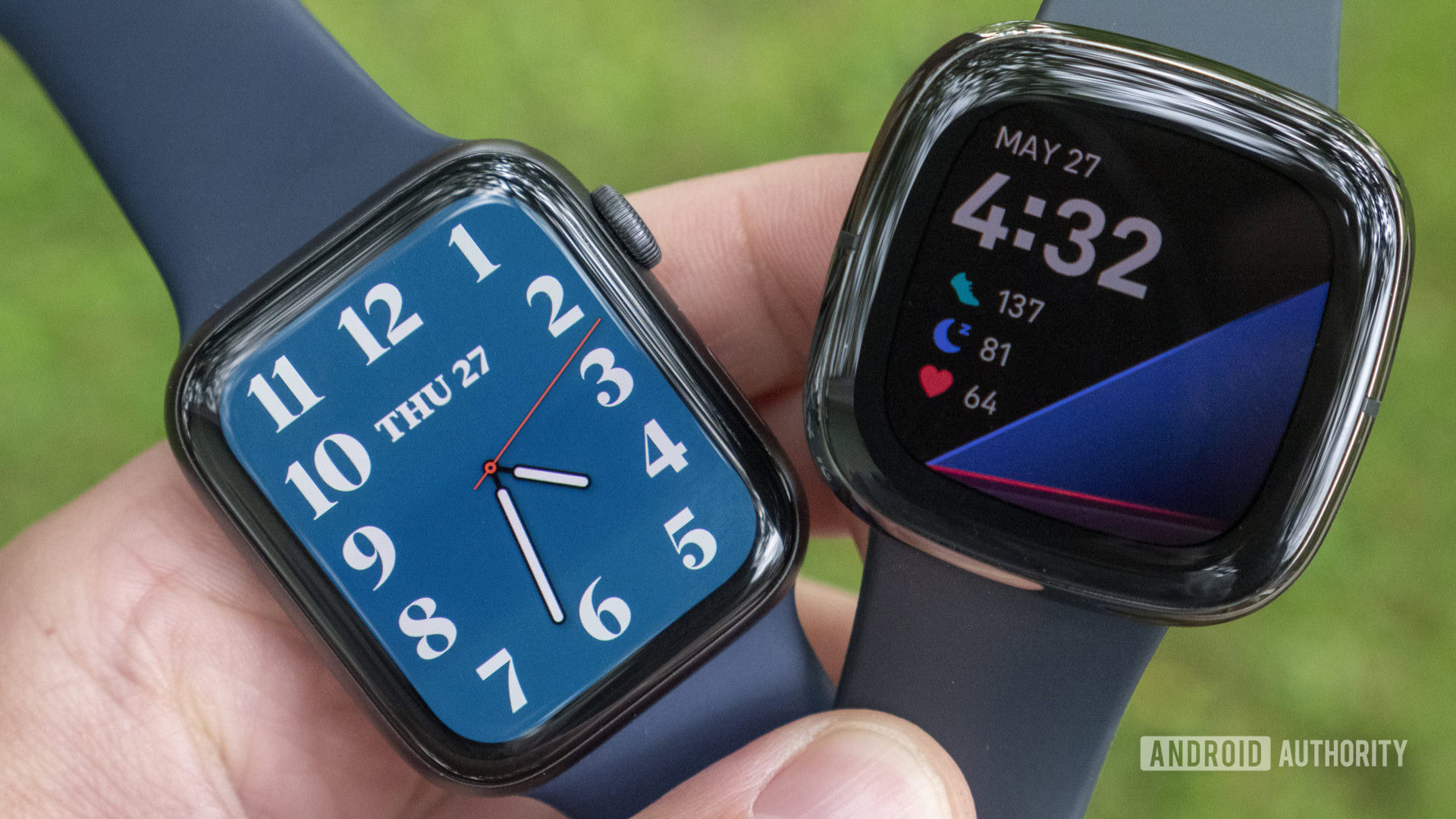
If you’re looking for a new wearable, there is no shortage of devices to choose from. For many users, two brands stand out as popular picks. Most iOS users find themselves shopping Apple’s watch line. Meanwhile, those new to fitness tracking may consider a Fitbit. Seeing as Fitbit is now owned by Google, this once again reaches the same debate we’ve had on mobile for years: Google or Apple? Things are a little more complicated here, though. While both brands offer great products, the experience is very different when you compare Fitbit vs. Apple Watch.
Fitbit vs. Apple Watch: Fundamental differences
Apple and Fitbit take fundamentally different approaches to wearables. Fitbit devices are designed for fitness first and foremost, hence the name. While a few of the company’s devices blur the line between a smartwatch and fitness tracker, their main focus is monitoring activity and counting calories. Fitbit also has a diverse product line with a variety of form factors. Shoppers can grab a small band-style tracker just as easily as a device with a bright AMOLED display. These devices range in cost so i’ts possible to join the Fitbit ecosystem at different price points. We also consider the Google Pixel Watch a Fitbit device, albeit a non-conventional one. The Wear OS-based Pixel Watch features extensive Fitbit integration and can even be purchased directly from the company’s website. It offers a much broader smartwatch experience than Fitbit’s other devices.
The Apple Watch stable includes one product line: a powerful smartwatch that can also be used for fitness. The company does sell a budget version and a larger Ultra model but generally speaking these devices are very similar in design and features. All Apple Watches offer seamless iPhone integration and every smart feature imaginable. Apple also boasts an unrivaled third-party app store so it’s possible to add nearly any tool to your wrist with a quick browse. What’s more, the perfectionism of Apple and the huge ecosystem of supported apps ensure the wearables also offer one of the most robust fitness platforms available.
In short, there is an element of comparing apples and oranges (there’s a pun in there). Neither platform is better but rather, each has particular pros and cons. That’s what we’ll be exploring here in this Fitbit vs. Apple Watch showdown.
Fitness tracking with Fitbit
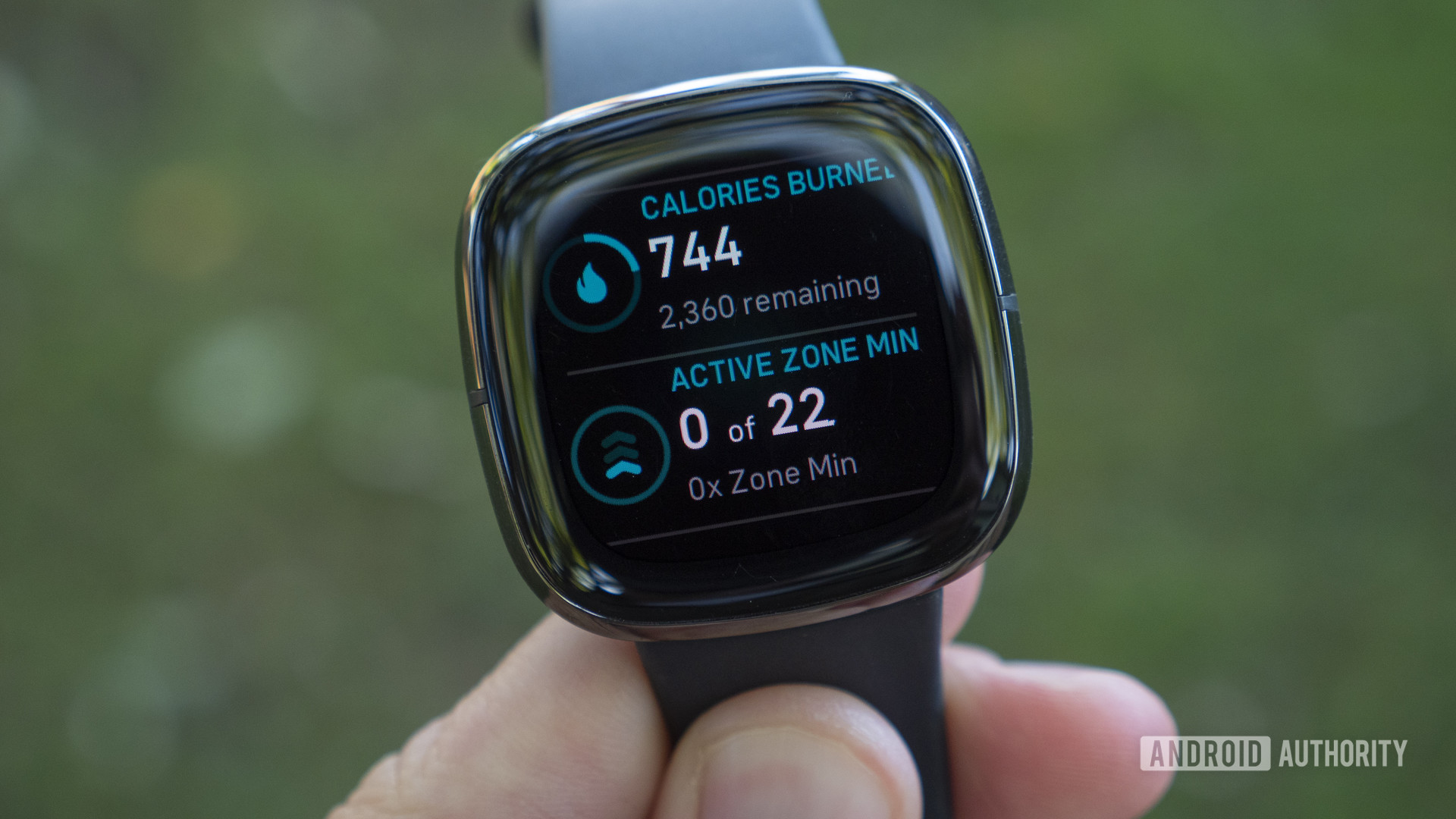
Fitbit has been in the fitness wearables game for a long time, and it shows in its comprehensive range of features and data tracking. A typical Fitbit offers the following:
- Step counts, calorie counting, and floors climbed via barometric altimeter
- Distance traveled and pace via standalone GPS or connected GPS
- Active Zone Minutes
- Heart rate data on-demand, throughout the day, and during workouts
- Automatic activity detection
- Sleep tracking with details on sleep stages, restoration, total time asleep, nighttime disturbances, and trends
- SpO2 monitoring
Additional features found on higher-end variants, such as the Google Pixel Watch, Fitbit Sense and Fitbit Sense 2 include:
- Electrodermal activity monitoring (stress)
- Electrocardiogram (ECG)
- Skin temperature
Fitbit generally has some of the most accurate heart rate sensors on the market and the sensor on the Google Pixel Watch is touted as the company’s best yet. We’re also big fans of Fitbit’s detailed sleep-tracking platforming, including the comprehensive Sleep Profile program. However, one of the company’s biggest strengths is the Fitbit companion app. The Fitbit app is approachable and easy for new users to navigate while still covering all the basics. Data is clearly presented with useful graphs and insights. For everyone from seniors to kids, Fitbit makes casual activity and health tracking simple.
Fitbit also offers integration with many useful services (Apple Health, Google Fit, MyFitnessPal, RunKeeper, Strava, etc.). The Google Pixel Watch offers a unique tracking experience in that users gain access to the best of Fitbit’s ecosystem as well as all the avails of the Google Play Store. Fitbit’s own app library is very small by comparison. Plus, the latest generation of Fitbit smartwatches doesn’t offer third-party app support, suggesting future development is unlikely.
Fitness tracking with the Apple Watch
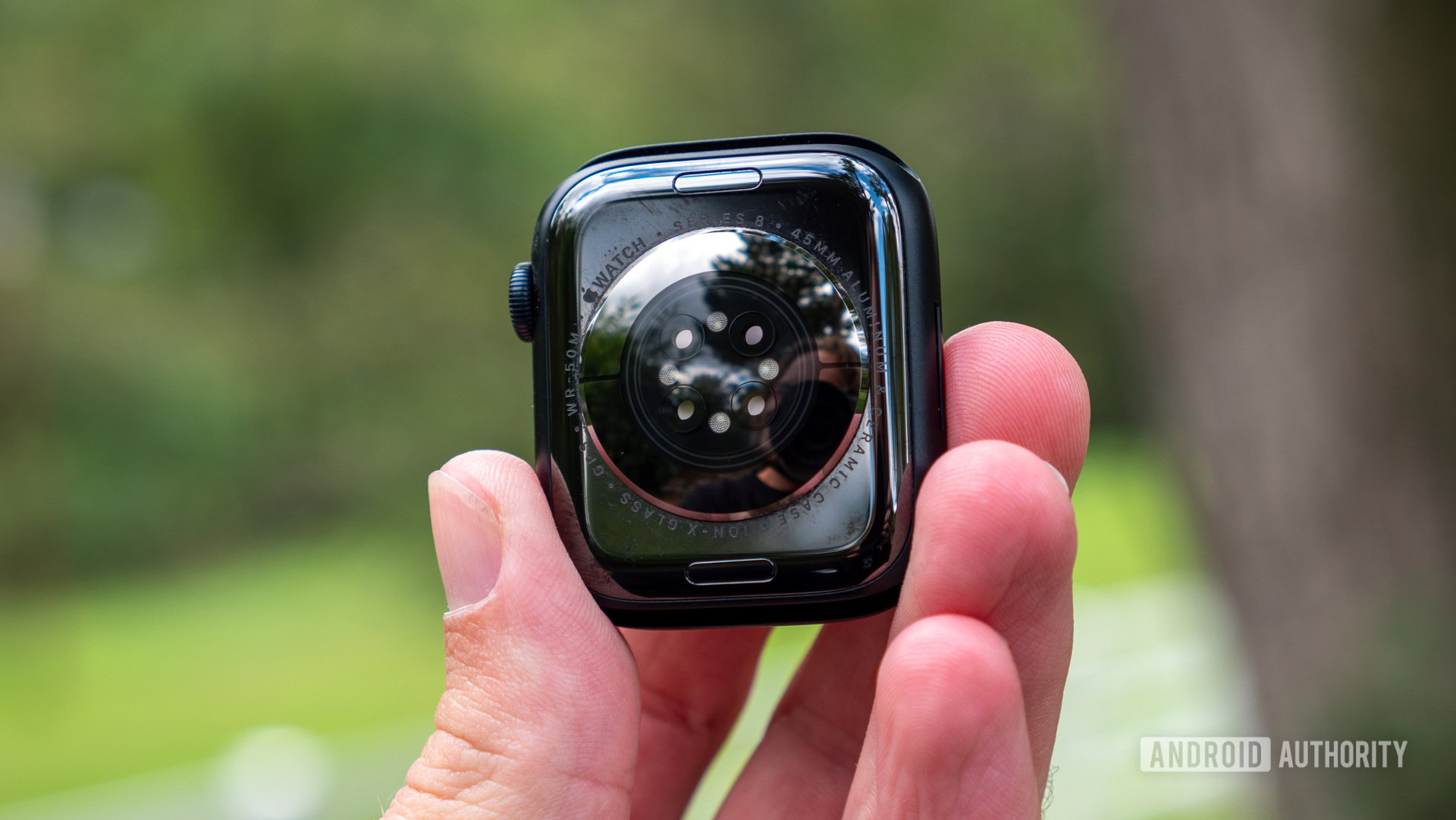
Apple Watches pack a growing range of features and sensors to help you track your health and fitness. The latest model, the Apple Watch Series 8, offers the following:
- Steps counts, calories burned, and floors climbed via barometric altimeter
- Distance traveled and pace via standalone GPS or connected GPS
- Heart rate data on-demand, throughout the day, and during workouts
- Automatic activity detection
- Sleep tracking with details on total time asleep, sleep stages, nighttime disturbances, and trends
- SpO2 monitoring
- Electrocardiogram (ECG)
- Temperature sensor
Apple’s sensors are top-class. In fact, we often use the device’s heart rate and GPS sensors to measure the accuracy of other wearables. In recent years, Apple has also deepened its fitness tracking software to include everything from niche tools for runners and triathletes to improved sleep tracking accuracy and women’s health tracking. In short, the company puts a lot more on your wrist than basic smarts.
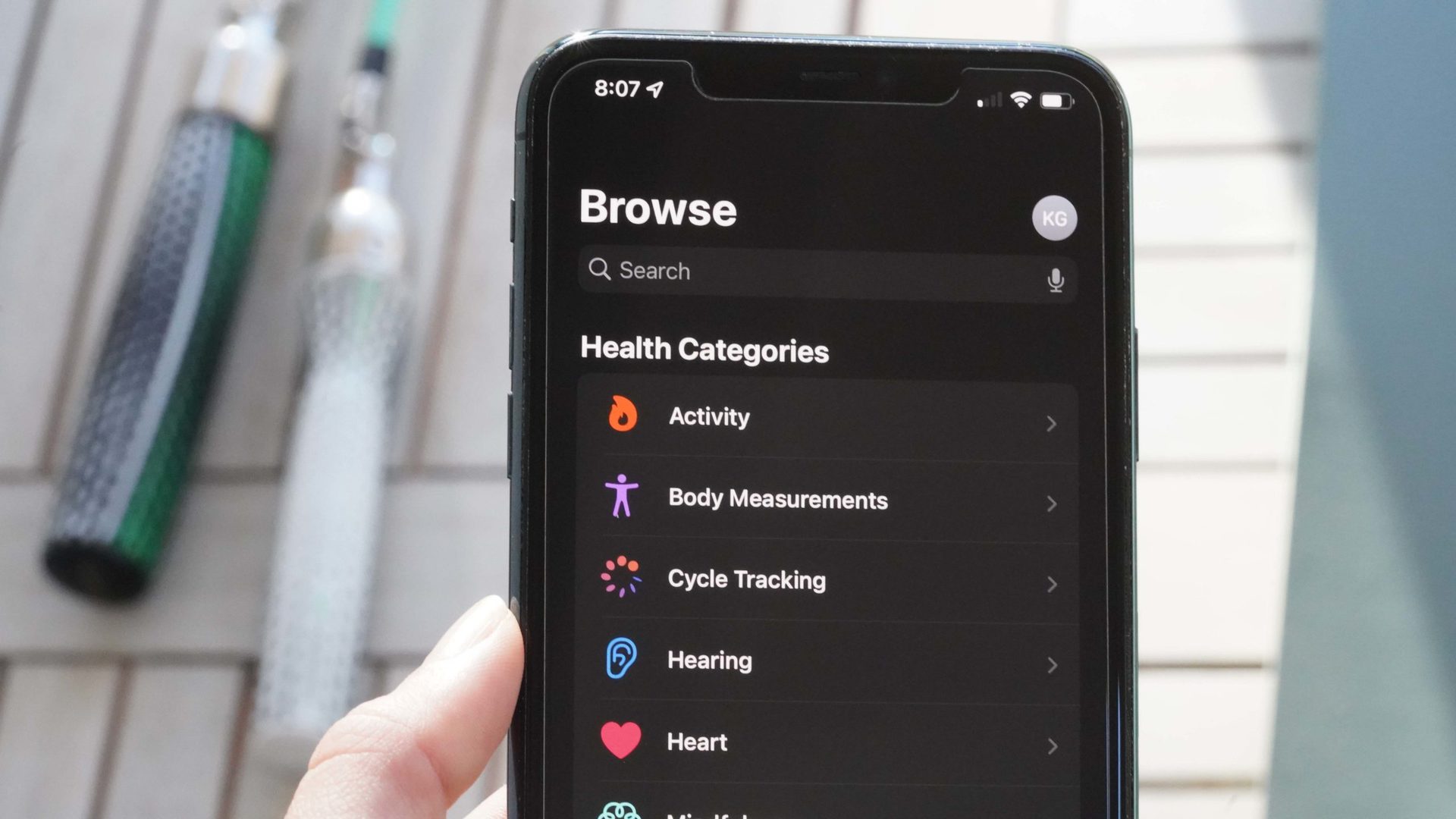
Unlike Fitbit’s single companion app, Apple utilizes two main apps to house and organize users’ data: Apple Health and Apple Fitness. The first provides a summary of all your basic health tracking stats, plus highlights, insights, and trends. You can dive into tons of metrics in the app’s Browse tab, set up a medical ID, and much more. In addition to data collected from your Apple Watch, the app also collects and combines data from all kinds of sources, including your iPhone, third-party apps, and compatible devices.
Apple Fitness is Apple’s exercise-tracking app. Here you’ll find the company’s iconic rings, workouts, mindfulness practices, trends, and awards. The app focuses on three activity stats: standing, exercise, and movement. As mentioned, Apple Watches track in-depth workout details with important health implications. The fitness app is the best spot to review this data.
Additionally, Apple Watches pair with an infinite number of third-party apps. Whether you want to track your workouts with a more focused fitness app (or download tailored playlists to use during your runs), Apple is the ecosystem with the best user experience. If there is a health or fitness stat not available natively, the odds are you will be able to find a solution in the Apps Store.
Fitbit vs. Apple Watch: Design and hardware

The Apple Watch is a beacon of smartwatch design widely praised for its premium feel and great looks. The devices launch in a variety of materials but even the basic aluminum models feature stunning curved, AMOLED displays, minimal bezels, amazing haptics, and an all-around polished finish. A stand-out feature is the “digital crown” that mimics the appearance of an analog watch while offering a tactile and convenient form of navigation in addition to the touchscreen. This can be found on the Pixel Watch as well, but not on many other devices.
Fitbit is capable of some great aesthetics, too. At a glance, you could easily mistake the Versa 3 or Sense for an Apple Watch. They feature the same square display, the same rounded corners, and a similarly large screen. The Sense 2 and Versa 4 are the most well-designed Fitbit devices available with a physical button added back to the watch case. But Fitbit can’t quite keep up with Apple’s production values. Nice though the smartwatches look, the screens feature subtle bezels and are actually a lot smaller than they appear. The materials generally feel lighter and less expensive, too.
That said, there is also only one Apple Watch design (which has barely changed since the very first iteration). The Apple Watch Ultra is the company’s biggest design departure but even the beefed-up, rugged model largely mirrors Apple’s traditional formula. Fitbit meanwhile, offers a wide range of devices including some of the most attractive band-style trackers on the market. The Fitbit Charge 5 and Inspire 3 are both sleek options loaded with features that are perfectly lightweight for sleeping and working out. They also come in much, much cheaper than any Apple Watch. The company even has a jewelry-inspired device, the Fitbit Luxe, for fashion-forward shoppers.
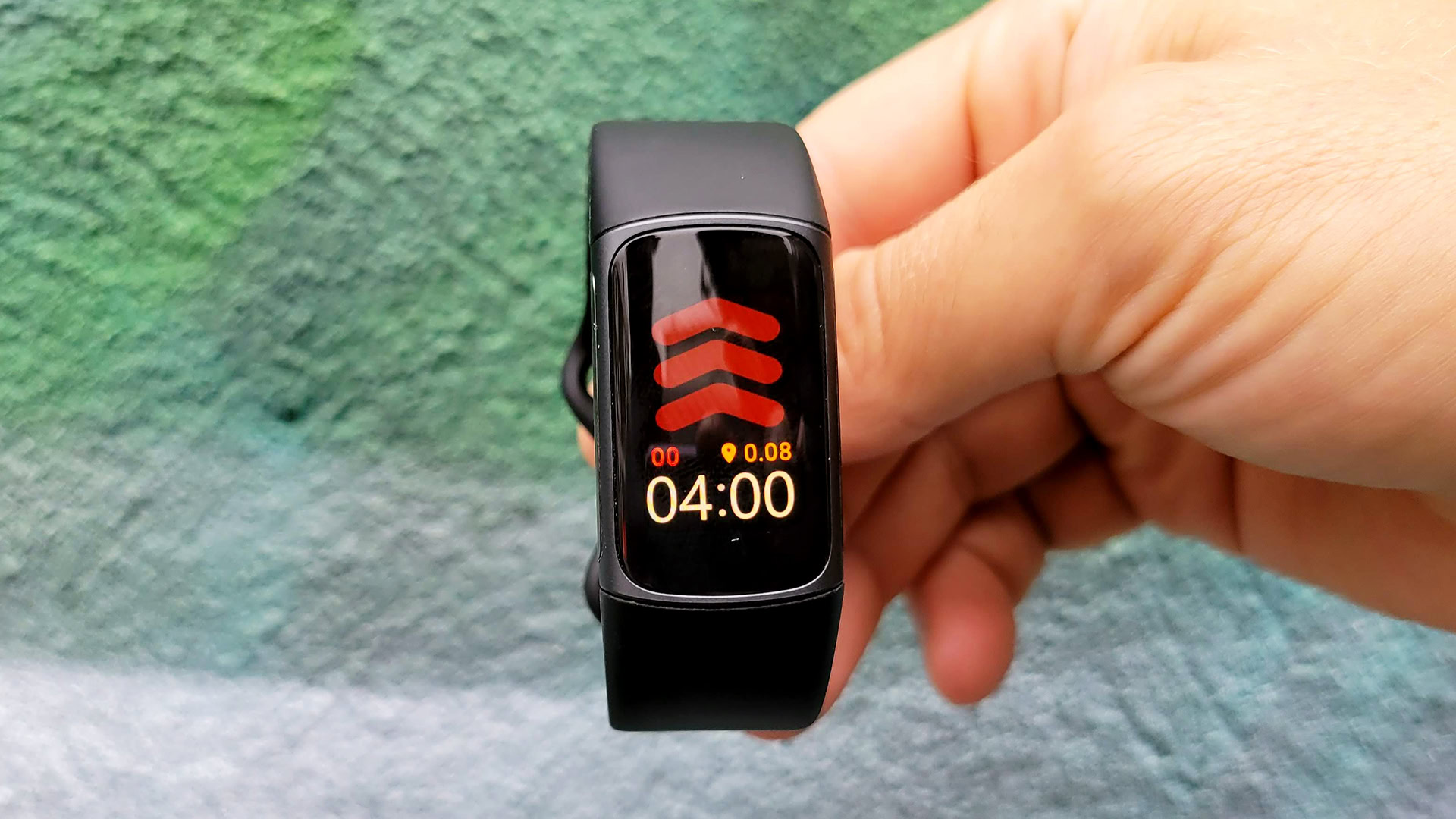
Apple’s biggest Achilles’ heel design-wise is battery life. A Fitbit smartwatch (not counting the Pixel Watch and its dismal battery life) will typically last around 5-6 days. This will be shorter if you use the always-on-display or go for multiple runs, but it still won’t get as short as the Apple Watch’s roughly 36 hours. Apple introduced Low Power mode to help alleviate users’ battery woes, but the company still hasn’t made up enough ground, in our opinion.
The battery life also drains more rapidly when you use the GPS. If you plan to use your Apple Watch for distance training, we recommend the Ultra model which packs the largest battery cell. That said, neither an Apple Watch nor a Fitbit device would necessarily be our top pick for runners. There are a variety of great running watches if you need a long-lasting, accurate device — many of which are made by Garmin.
Fitbit vs. Apple Watch: Smartwatch features
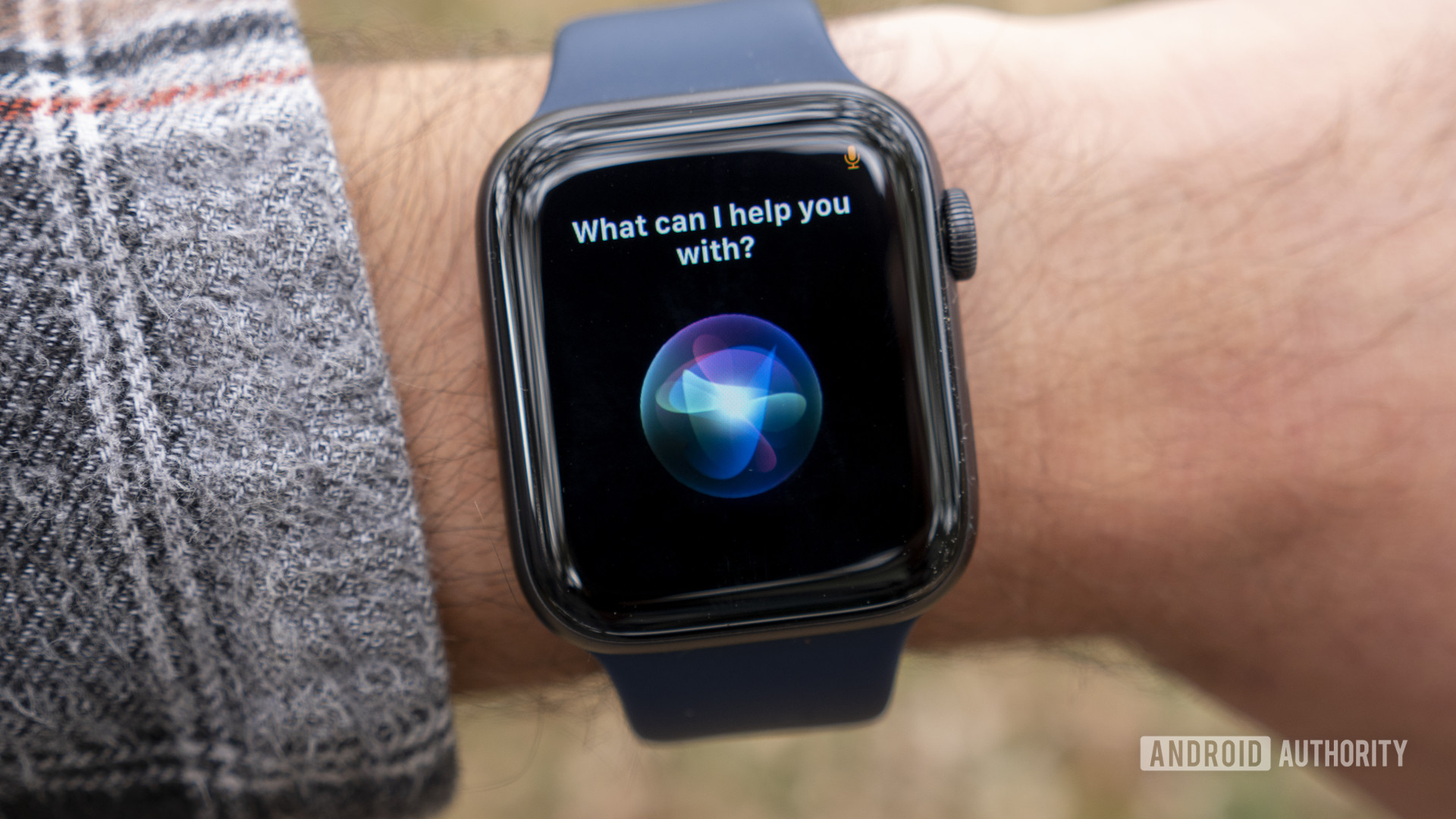
If you’re looking for a smartwatch, an Apple Watch is hands-down the better choice. Apple’s wearables have access to a much wider range of productivity apps available in the app store and integrate with an iPhone in a myriad of smart ways. Everything has Apple’s unique touch, too. The experience is seamless.
We’ve used our Apple Watch for everything from learning with cue cards to prompt ourselves during speeches and streaming audiobooks to managing medications. While Siri is generally considered one of the poorer voice assistants, it actually works really well on Apple Watch. If you’re using it to set timers and make calls, you’ll find it’s extremely useful to have on your wrist. Even if you only use the preloaded Apple Watch apps, you’ll have access to a variety of handy features: maps, a remote camera controller, news, weather, a walkie-talkie, a radio, podcasts, and more.

There are some useful features on the Versa and Sense lines, and the devices have great touch-responsiveness and snappy processors. The watches offer basic phone compatibilities like notifications, calendars, music controls (though no music storage as of late March 2023), and Bluetooth phone call support. The Versa 3 and Sense include both Alexa and Google Assistant but the newest generation only features Alexa. Likewise, only the older Fitbit devices offer third-party apps, and you’re less likely to find exactly what you’re looking for than on an Apple Watch. The selection of pre-loaded apps is much narrower, too. Of course, the big catch is that you will need an iPhone to use an Apple Watch in the first place. But then, if you only have an Android phone — what are you doing reading this?
Again, the exception here is the Google Pixel Watch. Though the device has its own growing pains, it offers a much broader smartwatch experience. Users will find all the best of Google’s tools onboard including turn-by-turn directions, Google Assistant, Google Home, and of course the Google Play Store. The watch also offers music storage and an LTE model.
Fitbit Premium vs. Apple Fitness Plus
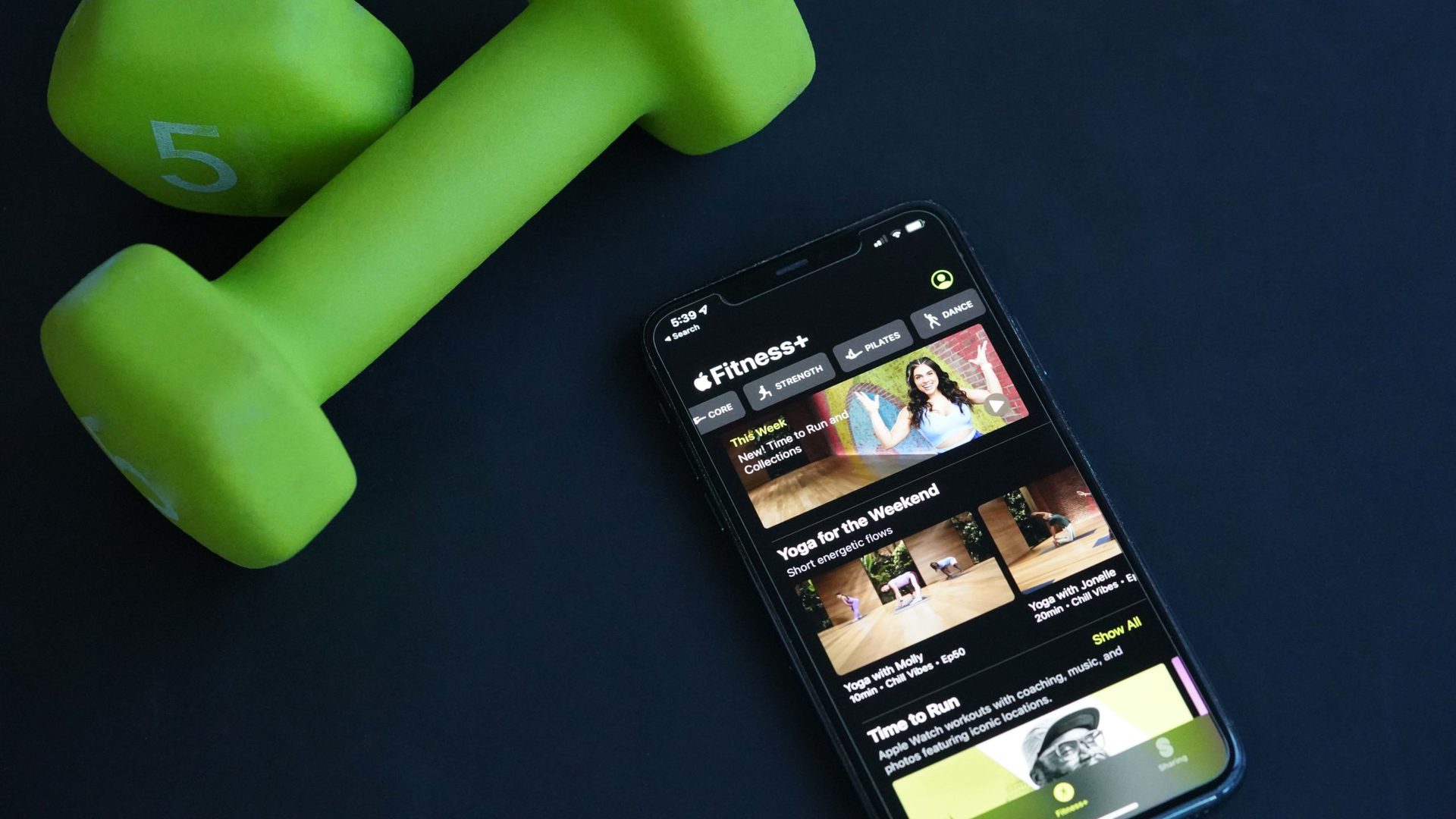
If you want more from your device, you can opt for premium features in either ecosystem. Unfortunately, subscription fees are a growing trend in the wearables market and one we’re certainly not excited about. However, Apple and Fitbit each handle the trend quite differently.
Fitbit Premium is a paid service that provides additional tools and deeper insight into your health data. The subscription service also features guided workouts/workout videos, personalized insights, and a detailed Health Metrics dashboard. Many new Fitbits offer free 6 to 12 months subscriptions so users can test run the service. Read our Fitbit Premium review to determine if the upcharge is worth it for you.
Like Fitbit, Apple also has a paid service that can be used in addition to the core experience: Apple Fitness Plus. Unlike Fitbit, however, this service isn’t constantly front and center and isn’t necessary for most users. With a standalone tab in the Fitness app, Apple Fitness Plus is clearly marked as a separate service. The platform focuses on guided workouts, workout videos, and audio content for runs and walks. It doesn’t lock away data or handicap your base-level smartwatch experience if you opt-out.
Fitbit vs. Apple Watch: Final thoughts
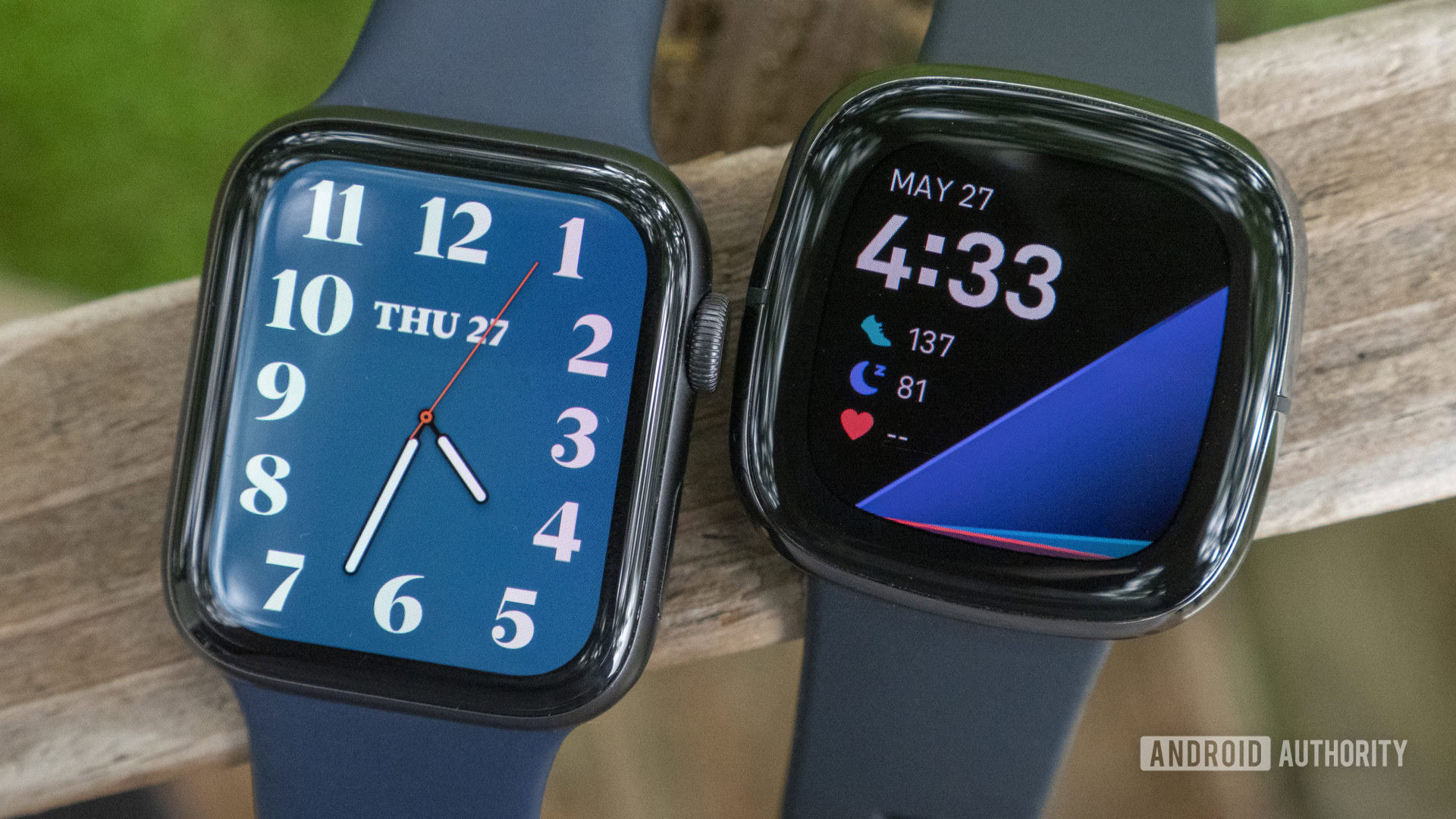
There simply isn’t an obvious best choice when comparing Fitbit vs. Apple Watch ecosystems. If it’s within their budget, iOS users are likely to prefer Apple’s offering on the whole. Fitness tracking on an Apple Watch is accurate and comprehensive and effectively supplemented via an unrivaled app store. Apple Health also does a great job bringing a wide range of features together in a single spot. The latest Apple Watches have some of the best wrist-based heart rate trackers on the market, and the hardware and software have premium quality standards.
Fitbit offers considerably more variety with a full stable of devices starting at less than $100. Fitbit’s fitness tracking suite is unlikely to suit dedicated athletes but it’s a great fit for anyone new to tracking or shoppers looking to keep casual tabs on their activity. The company also boasts superior sleep analysis and far better battery life. Apps in the Fitbit ecosystem are where its smartwatches fall short. Android phone users looking for a phone companion should still with a Wear OS device. For now, the Pixel Watch makes things complicated with its Fitbit-Wear OS hybrid experience. In theory, it’s the best of both worlds. However, we think the line has some first-generation kinks to work out before we’d recommend one to our readers.
We’d also like to know what you think. Which company has the best ecosystem, Apple or Fitbit?